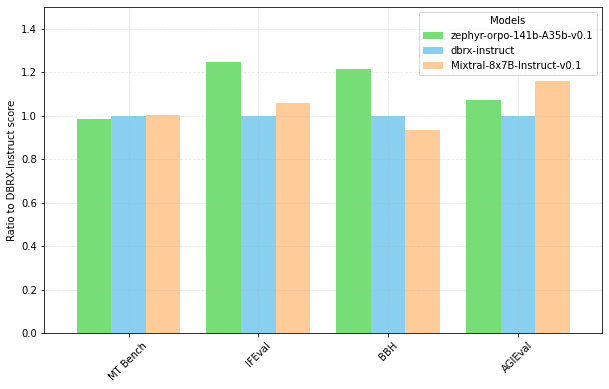- Zephyr 141B-A35B represents a leap forward in AI performance and efficiency.
- It utilizes the novel Odds Ratio Preference Optimization (ORPO) algorithm, surpassing traditional fine-tuning methods.
- ORPO eliminates the need for Supervised Fine-Tuning (SFT), streamlining computational processes.
- Trained on the “argilla/distilabel-capybara-dpo-7k-binarized” dataset, it showcases remarkable training efficiency.
- Performance metrics demonstrate excellence in general chat capabilities and robustness in real-world simulations.
- Applications range from enhancing customer service to improving personal digital assistants, promising cost reductions for AI-driven businesses.
Main AI News:
In the ever-evolving landscape of artificial intelligence, breakthroughs continue to redefine the possibilities of digital interaction for both individuals and enterprises. Standing at the forefront of these advancements is the Zephyr 141B-A35B, a model that sets new standards in AI performance and efficacy.
A successor to the esteemed Mixtral-8x22B, the Zephyr 141B-A35B distinguishes itself through the implementation of the groundbreaking Odds Ratio Preference Optimization (ORPO) alignment algorithm. Departing from conventional fine-tuning methods like DPO and PPO, ORPO heralds a paradigm shift in AI optimization.
Unlike its predecessors, ORPO eliminates the need for Supervised Fine-Tuning (SFT), streamlining computational processes significantly. This innovation is particularly noteworthy for its dual impact: enhancing performance while minimizing resource consumption, a pivotal consideration in today’s environmentally conscious technological landscape.
Training on the “argilla/distilabel-capybara-dpo-7k-binarized” preference dataset, the Zephyr 141B-A35B underwent rigorous processing across four nodes outfitted with 8x H100 GPUs, culminating in over 1.3 hours of training. Such efficiency underscores the model’s training prowess and computational efficiency.
Performance evaluations further attest to its excellence. Rigorous testing across various benchmarks, such as MT Bench and IFEval, showcases its prowess in general chat capabilities. Results from the LightEval evaluation suite affirm its robustness. However, it’s imperative to acknowledge potential variations from standardized settings due to the unique real-world simulation employed during testing.
In practical applications, the Zephyr 141B-A35B promises a myriad of uses, from augmenting customer service interactions to furnishing personal digital assistants with context-aware responses. Its adeptness in processing and comprehending natural language not only enhances user experiences but also holds the promise of significant cost reductions for businesses reliant on AI-driven systems.
Conclusion:
The introduction of Zephyr 141B-A35B with its revolutionary advancements in AI efficiency signals a significant shift in the market. Businesses leveraging AI technologies stand to benefit from enhanced performance, streamlined computational processes, and potential cost savings. The model’s versatility across various applications positions it as a valuable asset in meeting the evolving demands of the digital landscape.

